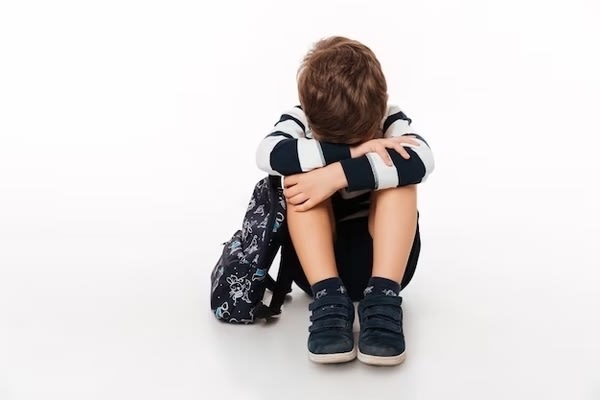
The Impact of Divorce on Children
The Impact of Divorce on Children: Signs to Watch For and How to Help
Divorce is a complex and emotionally charged experience for all parties involved, but it can be particularly challenging for children. The dissolution of their parents' marriage can have profound emotional and psychological effects on children, which, if left unaddressed, may have lasting consequences.
I. Emotional Impact on Children
A. Feelings of Abandonment
Divorce often leaves children grappling with feelings of abandonment. They may believe that they are somehow responsible for their parents' separation or feel deserted when one parent moves out. These emotions can lead to a deep sense of insecurity.
B. Anxiety and Uncertainty
The uncertainty that accompanies divorce can trigger anxiety in children. They may worry about where they will live, whether they will see both parents regularly and if their lives will ever return to a sense of normalcy.
C. Grief and Loss
Children experience a profound sense of grief and loss when their parents divorce. They mourn not only the end of their parents' marriage but also the loss of the family unit as they knew it.
II. Psychological Effects on Children
A. Lower Self-Esteem
Divorce can erode a child's self-esteem. They may internalize the idea that something is wrong with them or that they are unlovable, leading to negative self-perception.
B. Behavioural Changes
Children often exhibit behavioural changes in response to divorce. They may become more aggressive, withdrawn or disobedient. These changes can stem from their inability to process complex emotions.
C. Academic Struggles
Divorce can negatively impact a child's academic performance. The emotional turmoil they experience can make it difficult to concentrate, leading to a decline in grades and overall school performance.
III. Signs to Watch For
A. Emotional Signs
1. Increased irritability or mood swings
2. Frequent crying or emotional outbursts
3. Anxiety or excessive worrying
4. Withdrawal from social activities and friends
5. Regressive behaviours like bedwetting or thumb-sucking in younger children
B. Behavioural Signs
1. Increased aggression or defiance
2. Acting out in school or at home
3. Frequent nightmares or sleep disturbances
4. Changes in eating habits (overeating or undereating)
5. Substance abuse (in older children and teenagers)
C. Academic Signs
1. Decline in grades or academic performance
2. Frequent absences from school
3. Lack of interest in extracurricular activities
4. Difficulty concentrating or completing homework
IV. Strategies to Help Children Cope
A. Open and Honest Communication
1. Encourage children to express their feelings and concerns.
2. Be truthful about the divorce in an age-appropriate manner, avoiding blame or disparagement of the other parent.
3. Listen actively and empathetically to their thoughts and emotions without judgment.
B. Maintain a Consistent Routine
1. Consistency provides a sense of stability in a child's life.
2. Keep regular schedules for meals, bedtime and activities.
3. Ensure that both parents maintain similar routines to minimize disruptions.
C. Seek Professional Help
1. Consider family therapy or individual counselling for the child.
2. Professional therapists can help children process their emotions and develop coping strategies.
D. Encourage Healthy Coping Mechanisms
1. Teach children healthy ways to cope with stress, such as exercise, mindfulness, or creative outlets like art or music.
2. Discourage unhealthy coping mechanisms like substance abuse or self-harm.
E. Co-Parenting Effectively
1. Maintain open lines of communication with the other parent.
2. Work together to establish consistent rules and boundaries for the child.
3. Put the child's needs and well-being above personal conflicts or disagreements.
F. Show Unconditional Love and Support
1. Reassure children that they are loved by both parents.
2. Be patient and understanding, recognizing that their emotional healing takes time.
G. Limit Exposure to Conflict
1. Shield children from contentious discussions or arguments between parents.
2. Refrain from using children as messengers or intermediaries in conflicts.
H. Encourage Positive Relationships
1. Foster healthy relationships between children and both parents.
2. Encourage visitation and regular contact with the non-custodial parent to maintain strong bonds.
I. Be a Role Model
1. Demonstrate healthy conflict resolution and communication skills.
2. Show children that it is possible to move forward and find happiness after divorce.
Divorce is undoubtedly a challenging and emotionally taxing experience for children. However, with the right support and strategies in place, parents can help their children navigate these turbulent waters and minimize the emotional and psychological impact. Open communication, consistency, professional guidance when needed and above all, a focus on the child's well-being can make a significant difference in helping them cope with the aftermath of divorce. By recognizing the signs to watch for and implementing effective strategies, parents can provide their children with the tools they need to heal, grow, and thrive despite the challenges they face

